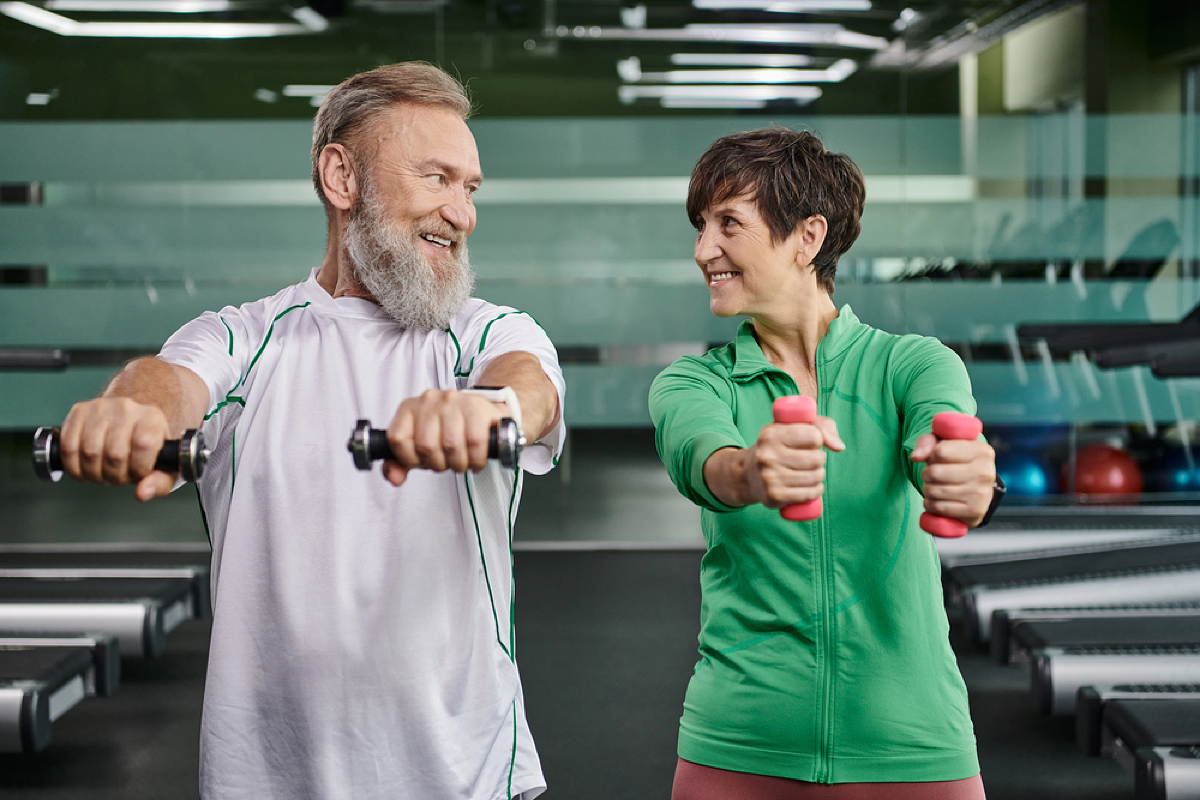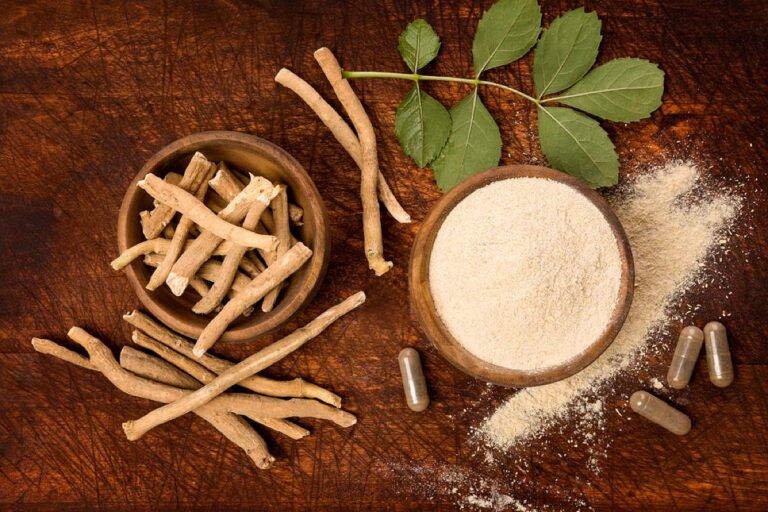Strength training in old age: the underestimated key to vitality
Did you know that people over 60 who regularly strength train as they age can increase their life expectancy by up to 20%? Strength training is often seen as the domain of the young and muscle-bound athletes, but for seniors it can be the key to healthy and active ageing. Surprisingly, regular strength training in old age can not only help build muscle mass, but also improve fitness and reduce the likelihood of health problems such as osteoporosis and cardiovascular disease.
Older adults who exercise 3-5 times per week, loading each muscle 2-3 times, can make remarkable progress. Studies show that the recommended number of 4-6 sets per training session, close to muscle failure, can deliver optimal results. An adequate protein intake of 1.6 to 2.2 grams per kilogram of body weight per day also supports muscle building. Sleep, nutrition and a balanced lifestyle also play a crucial role in maintaining senior fitness and promoting a healthy lifestyle.
Key findings
- Regular strength training in old age increases life expectancy.
- Strength training improves muscle mass and general fitness.
- Muscle growth is promoted by adequate protein intake.
- Sleep and a balanced lifestyle are important for regeneration.
- Strength training can reduce the risk of osteoporosis and cardiovascular disease.
Why strength training is important in old age
Strength training in old age is essential to combat the natural process of muscle loss known as sarcopenia. From the age of 30, people begin to lose muscle mass, a process that accelerates with age.
Muscle loss and its consequences
Muscle loss in old age leads to reduced physical performance and an increased risk of falls. Studies show that from the age of 50, up to two percent of muscle mass can be lost each year. With complete physical inactivity, the loss of strength can amount to 40 percent by the age of 70. Older adults who participate in strength training benefit from a significant increase in muscle strength and mass, which reduces the risk of falling.
Influence on bone density
Another problem in old age is the loss of bone density, which increases the risk of osteoporosis. Bone density decreases rapidly, especially in women after the menopause. Strength training promotes bone strength by creating mechanical stresses that contribute to bone compaction. A study by the Osteoporosis Research Center at the University of Erlangen-Nuremberg shows that regular muscle training can halt the progression of bone loss and promote bone growth. This is crucial for preventing falls, as stronger bones reduce the risk of fractures.
The science behind strength training in old age
Regular strength training is not only beneficial at a young age, but also plays a decisive role in health in old age. Numerous scientific studies have shown that people over the age of 60 can significantly increase their muscle strength through targeted strength training. This has a positive effect on their general health and quality of life.
Studies on muscle strength in the older population
Older people who engage in consistent strength training show remarkable improvements in their muscle strength. A meta-analysis has shown that strength training can reduce the risk of falling by around 30%. These scientific studies emphasize the importance of regular exercise to maintain muscle mass and muscle function. It is recommended to perform balanced strength training two to three times a week to achieve optimal results.
Bone health and fall prevention
Strength training not only has positive effects on muscle strength, but also on bone health. From the age of 50, bone density begins to decrease, which increases the risk of osteoporosis and fractures. Scientific studies have shown that regular strength training can improve bone density and thus reduce the risk of fractures. It also helps to alleviate the symptoms of chronic diseases such as arthritis and diabetes. Training therefore not only contributes to muscle strength, but is also an important factor in preventing falls in old age.
| Advantages | Strength training | Bone health |
|---|---|---|
| Maintaining muscle mass | ✔️ | ➖ |
| Reducing the risk of falling | ✔️ | ✔️ |
| Increase in bone density | ➖ | ✔️ |
| Alleviation of chronic diseases | ✔️ | ➖ |
Strength training in old age works wonders
Strength training in old age has remarkable effects that go far beyond simple muscle building. One of the most astonishing findings is that regular strength training can significantly improve overall quality of life. From the age of 30, the body loses around 1% of muscle mass every year if no strength training is carried out. Through targeted training, this muscle loss can not only be stopped, but also reversed, which can increase vitality and promote independence in old age.
One of the most important effects of strength training in old age is the increase in bone density, which significantly reduces the risk of osteoporosis and bone fractures. Strength training not only strengthens the muscles, but also the bones, which is particularly important for older adults. Studies show that people who regularly do strength training suffer less back pain and feel less exhausted overall.
Another significant benefit of strength training in old age is the improvement in balance and coordination. This can reduce the risk of falls by up to 30%. Older people who strengthen their balance through strength training can therefore remain active and independent for longer. An individually adapted training program is crucial here to avoid overloading and to take personal health conditions into account.
Strength training also has a positive effect on mental health. It promotes the release of happiness hormones such as serotonin and dopamine, while stress hormones such as cortisol are reduced. This can reduce the risk of depression by up to 25% and help to improve overall mental health.
Metabolic health is also promoted by strength training. It helps to control weight and reduce the risk of type 2 diabetes by up to 50%. Regular training stabilizes blood sugar levels and improves insulin sensitivity. Targeted strength training in old age can therefore increase both physical and mental vitality.
Recommended exercises for effective strength training in old age include squats, bench presses and rowing movements. These exercises help to significantly increase muscle strength and mass and promote mobility. The weights should be selected so that 8-12 repetitions can be performed cleanly to achieve sustainable progress.
The benefits of regular exercise for seniors
Regular exercise offers numerous benefits for seniors that go far beyond physical health promotion. It plays a key role in maintaining mobility in old age and promoting mental health at the same time.
Improved mobility and stability
A high degree of mobility is crucial in old age in order to safely master everyday challenges. The World Health Organization (WHO) recommends at least 150 to 300 minutes of moderate exercise per week, which corresponds to an average of around 20 minutes per day. These moderate units not only improve mobility in old age, but also reduce the risk of falls in older people by up to 50 percent.
Research shows that regular exercise, such as daily walks, can significantly reduce the risk of stroke. Women who walked for two hours or more each week were 30 percent less likely to suffer a stroke than those who incorporated little or no exercise into their daily lives. In addition, seniors can maintain muscle strength through strength training at least twice a week, which contributes to overall stability and safety.
Positive effects on mental health
Mental health is also a key aspect of the benefits of regular exercise. Studies show that physical activity lowers stress levels and improves sleep quality. People who integrate a high level of exercise into their daily lives benefit from a better body mass index, lower blood sugar and cholesterol levels, and an overall better mental state.
Regular exercise not only improves physical abilities, but also strengthens mental health. Exercise has been particularly popular with older people due to its ability to promote social interaction and improve overall wellbeing. This emphasizes the importance of the benefits of exercise, which extend far beyond the physical level and have a positive impact on seniors‘ entire lives.
How to start strength training in old age
Starting training at an older age requires careful planning and consideration of individual needs. The basic training principles and the importance of an individually tailored training program are explained below. It is worth investing time in preparation to ensure long-term success.
Basic principles
The basic principles of training include gradually increasing the intensity and frequency of training. Studies show that strength training can increase maximum strength and muscle mass by 6-37% in older people (Lopez et al., 2018). It is important to start slowly and gradually accustom the body to the strain. It is particularly helpful to start with moderate weights and simple exercises and increase them over time.
Individual customizations
Individualized training is essential to meet the specific needs and health conditions of each individual. People over the age of 50 lose 1-2% of their muscle mass per year without active countermeasures (Journal of the American Geriatrics Society, 2004). Therefore, the exercise program should always be adapted to personal abilities and goals. A consultation with a health professional, such as a physician or physical therapist, is advisable to identify existing health limitations and develop a customized exercise program.
The consultation helps to minimize risks and create a sustainable training plan that is both safe and effective.
Best practices for safe training
Safe training is crucial to avoid injury and get the most out of your strength training. Especially as you get older, it’s important to follow some basic principles to stay healthy and fit.
Warm-up and mobility exercises
Careful warm-up exercises are a good start to any training session. They optimally prepare the muscles and joints for the upcoming strain and thus contribute to safe training. Warming up regularly can improve mobility and help to minimize the risk of injury. Typical warm-up exercises could include light jogging, jumping rope or dynamic stretching.
Progressive overload
Another key element for effective and safe training is progressive overload. It ensures that the muscles are constantly challenged, which promotes muscle growth and strength gains. In practical terms, this means that the intensity of the training is continuously increased, for example by increasing the weight or the number of repetitions. For example, with a maximum bench press of 100 kg, you could aim for 8-15 repetitions with a weight of 60-80 kg.
Here are some basic guidelines:
- Beginners should start with two full-body training days per week, while advanced users can increase this to three days.
- The training plan should be varied every 6-8 weeks in order to challenge the muscles in different ways.
- After intensive strength training, the stressed muscles should have at least 48 hours rest.
Observing these principles not only increases the effectiveness of your training, but also ensures the safety and longevity of your fitness routine.
An effective fitness program for seniors
A well-designed senior fitness program can make a decisive contribution to maintaining physical health and vitality. Regular strength training can increase physical performance and reduce the risk of injury from falls by up to 50%. This full-body workout is specifically designed for seniors and takes into account their specific needs and limitations.
Full body workout
An effective full-body workout for seniors should address all major muscle groups. It is important to choose exercises that involve functional movements. This will help to improve daily living skills and general mobility. Regular strength training improves bone density, which is crucial for the prevention of osteoporosis, which affects 1 in 3 women and 1 in 5 men over 50. For every kilo of muscle mass, the body consumes around 50 calories more per day, which is also important for fat loss.
Recommended exercises
The best recommendations for exercises as part of a senior fitness program include:
- Squats: Strengthen the leg and gluteal muscles and improve balance.
- Bench press: Stimulates the chest, shoulder and triceps muscles.
- Rowing with cable pulley: Improves back muscles and posture.
- Planks: Strengthens the core muscles and reduces the risk of slipped discs by up to 30%.
- Dumbbell curls: Promotes arm strength and general musculature.
It is estimated that people lose between 2.5 kg and 3.5 kg of muscle mass per decade of life, which leads to a significant loss of strength. Therefore, seniors can benefit significantly from structured full-body exercises and strength training. Regular strength training can lower blood pressure by 5-10 mmHg, reducing the risk of cardiovascular disease. Cholesterol levels can be improved by up to 10%, which contributes to cardiovascular health.
A senior fitness program should be designed to maintain and improve both muscle and bone density. Strength training can increase glucose uptake by up to 20% and thus counteract the development of type II diabetes.
In addition, strength training can have a positive effect on mental health, which leads to an improvement in general well-being.
The books „The Best Exercises for Seniors“ and „The Muscle Training Bible for Seniors“ are very popular among German readers. Both offer numerous exercises and tips on how seniors can keep their bodies fit even in old age.
Expert tips for strength training in old age
Strength training in old age is becoming increasingly important, and not without reason. Expert care and sound advice from professionals are essential to ensure that seniors benefit from their efforts without running an increased risk of injury. Both physiotherapists and personal trainers play an essential role here.
Advice from doctors and physiotherapists
Before you start strength training, expert advice from doctors and physiotherapists is extremely important. These specialists can identify any health problems and draw up appropriate training plans. According to a study by the Johann Wolfgang Goethe University in Frankfurt/Main, regular strength training can reduce chronic back pain by 38 percent. Physiotherapy in old age helps to evaluate individual limitations and select targeted exercises that promote health and minimize the risk of injury.
The role of the personal trainer
A personal trainer can optimally adapt the training to individual needs and abilities. Aerobic and strength training sessions are planned taking into account personal goals and physical condition. Regular training with a personal trainer can reduce the risk of developing diabetes. In addition, strength training helps to prevent cardiovascular disease and can reduce the risk of bowel cancer by up to 25 percent. A well-structured training plan created by a personal trainer makes it possible to achieve the best results without the risk of overtraining or injury.
| Advantage | Study |
|---|---|
| Reduction of chronic back pain | Johann Wolfgang Goethe University Frankfurt/Main |
| Reduction of the risk of bowel cancer by 25% | US study |
| Reducing the risk of diabetes | – |
| Prevention of cardiovascular diseases | – |
Muscle training in old age: how often and how intensively?
The frequency and intensity of training are key factors in ensuring that muscle training remains effective and safe in old age. Muscle loss begins from the age of 30 if it is not counteracted by active training. At the age of 50, this breakdown accelerates, a phenomenon known as sarcopenia. It is therefore crucial to find the right balance between repetition range, intensity and rest periods.
Repetition range and training frequency
The recommended training frequency for people over 50 consists of 2 to 3 full-body training sessions per week. It is important that each muscle group is given a recovery period of 48 to 72 hours after an intensive session. The optimal break time ensures that the muscles have sufficient time to recover and grow.
Intensity level and breaks
The intensity of the training should be carefully adapted to the individual fitness level. Exercising too intensively without sufficient breaks can lead to increased cortisol levels and thus to stress reactions. It is crucial to alternate moderate and intense workouts to improve the insulin sensitivity of muscle cells and minimize inflammation. Green tea, especially varieties such as matcha or oolong, can support training performance with valuable nutrients and help to compensate for fluid and mineral losses during training.
Nutrition and regeneration
A balanced diet is a key component for recovery and muscle building in old age. It provides the necessary nutrients to repair muscle microtrauma that occurs during intense exercise. In particular, protein intake is essential to repair and strengthen damaged muscle fibers through protein biosynthesis.
Nutrients for muscle building
The diet in old age should be rich in proteins, vitamins and minerals. Sufficient protein intake is necessary to prevent muscle breakdown and promote muscle building. Important nutrients include:
- Proteins: Necessary for repairing and building muscle tissue.
- Vitamins and minerals: support cell function and strength development.
- Antioxidants: Help to reduce inflammatory processes and accelerate regeneration.
An inadequate intake of nutrients and protein can significantly hinder muscle repair and muscle building. It is therefore important to ensure a balanced diet.
The importance of omega-3 fatty acids
Omega-3 fatty acids play a special role in nutrition in old age. These essential fatty acids not only help to reduce inflammatory processes in the body, but also support heart health and cognitive function. Omega-3 fatty acids are found in foods such as:
- Fatty fish (e.g. salmon, mackerel, herring)
- Linseed and chia seeds
- Walnuts
- Algae oil
A regular intake of omega-3 fatty acids can also improve muscle regeneration and shorten the adaptation phase after training. They also help to minimize the risk of overuse injuries and counteract chronic stress.
Health in old age through a balanced lifestyle
A balanced lifestyle is crucial for good health in old age. With increasing age, cells regenerate more slowly, which leads to a decrease in physical performance. The risk of chronic diseases increases, so it is all the more important to take preventative measures through a balanced diet, sufficient quality sleep and mental balance.
Eating habits
Older people often have an increased need for certain vitamins and minerals, such as vitamin D, calcium, vitamin B12 and magnesium. A high-fiber diet can counteract constipation, which is particularly common in old age. It is recommended to drink at least 1.5 to 2 liters of water or unsweetened tea per day to ensure hydration. Protein intake should also be at least 1.2 g per kilogram of body weight per day, even with little physical activity.
Sleep and mental health
Sleep problems increase with age and can lead to tiredness and a weakened immune system. A fixed sleep routine can help to improve the quality of sleep and stabilize the sleep-wake cycle. Stress management techniques such as mindfulness and meditation have positive effects on mental health. Regular physical activity and social engagement also contribute to mental balance.
Long-term benefits of strength training in old age
Strength training offers long-term benefits in old age that go far beyond physical fitness. One of the most outstanding benefits of strength training in old age is the improvement in long-term health. Studies, such as the one by Maestroni et al. (2020), show that strength training plays a crucial role in strengthening muscles and preventing age-related muscle loss (sarcopenia). From the age of 30, people lose between 3% and 5% of their muscle mass per decade. By exercising regularly, seniors can effectively counteract this loss and maintain their muscle mass.
Another significant benefit is the positive effect on bone health. According to a 2015 study, postmenopausal women who regularly engage in high-intensity strength training show significant improvements in bone mineral density. This contributes significantly to the prevention of osteoporosis, which is a particularly high risk for postmenopausal women. Training also increases physical performance and reduces susceptibility to falls and the associated injuries.
In addition, regular strength training improves the body’s vital functions and promotes active ageing. It lowers blood pressure levels, improves cholesterol levels and increases glucose uptake, which in turn counteracts the development of type II diabetes. The myokines released during exercise also promote fat burning and optimize glucose utilization, which supports the metabolism. All of these factors help to drastically improve quality of life in old age and maintain independence for longer.




